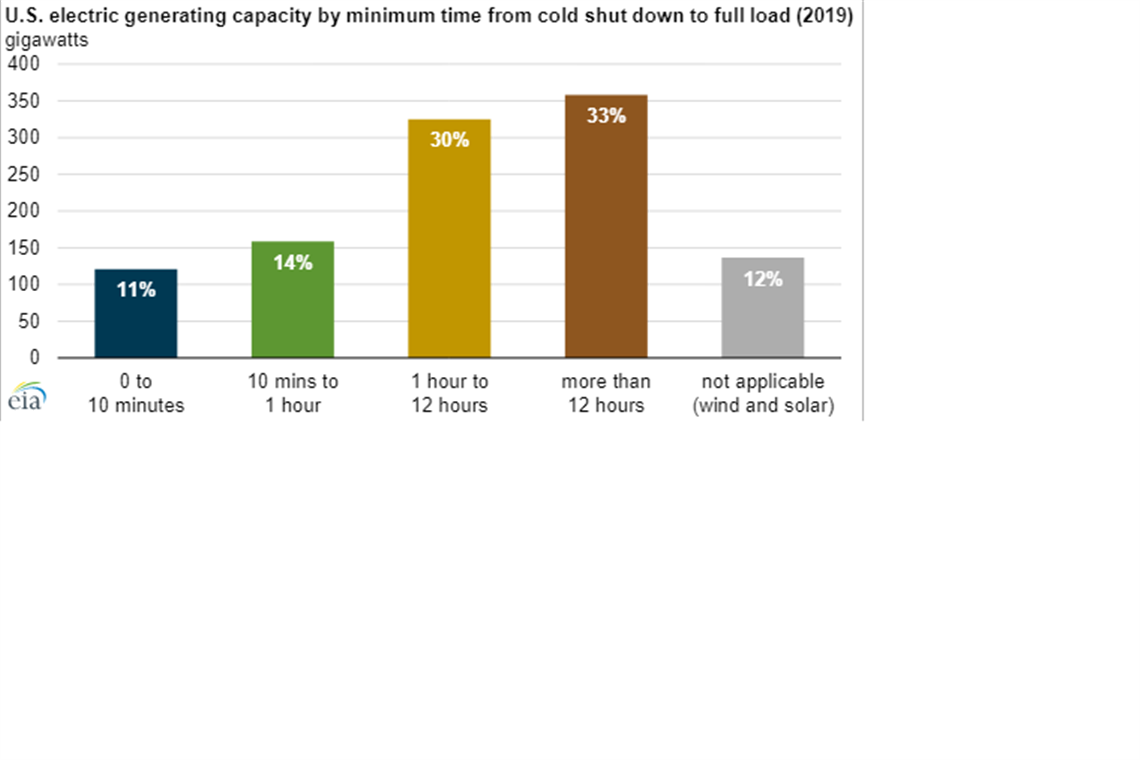EIA: 25% of U.S. Power Plants Can Start Up Within An Hour
20 November 2020

About 25% of U.S. power plants can go from being shut down to fully operating within one hour, based on data collected in the U.S. Energy Information Agency’s (EIA’s) annual survey of electric generators.
Some power plants, especially those powered by coal and nuclear fuel, require more than half a day to reach full operations.
Generator startup time differs across electricity-generating technologies because of the differences in the complexity of electricity generating processes, especially when starting again after all processes have been stopped (cold shut down). A generator’s startup time is different from a generator’s ramp rate, which reflects how quickly that generator can modify its power output once it’s operating.
Most hydroelectric turbines can go from cold start to full operations in less than 10 minutes. Combustion turbines, which use a combusted fuel-air mixture to spin a turbine, are also relatively fast to start up.
Steam turbines often require more time to form steam, which needs to reach certain temperature, pressure, and moisture content thresholds before it can be directed to a turbine that can spin the electricity generator.
Nuclear power plants use steam turbines, but these plants have additional time-intensive processes that involve managing their nuclear fuel. Almost all nuclear power plants require more than 12 hours to reach full operations. Power plants that require more than 12 hours to start up are increasingly rare. Only 4% of the generating capacity that came online from 2010 to 2019 requires more than half a day to reach full load.
Natural gas combined-cycle systems, which involve both a steam turbine and a combustion turbine, account for more capacity than any other generating technology in the United States. Most of those systems can reach full operations in between one hour to 12 hours, although some can start up within an hour.
The percentage of the generator fleet that does not respond to this question in EIA’s survey has doubled—from 6% in 2013, when EIA first collected this data, to 12% in 2019—as a result of the number of utility-scale solar and wind power plants added in recent years. This question is not relevant for these types of plants.
STAY CONNECTED




Receive the information you need when you need it through our world-leading magazines, newsletters and daily briefings.
POWER SOURCING GUIDE
The trusted reference and buyer’s guide for 83 years
The original “desktop search engine,” guiding nearly 10,000 users in more than 90 countries it is the primary reference for specifications and details on all the components that go into engine systems.
Visit Now
CONNECT WITH THE TEAM









